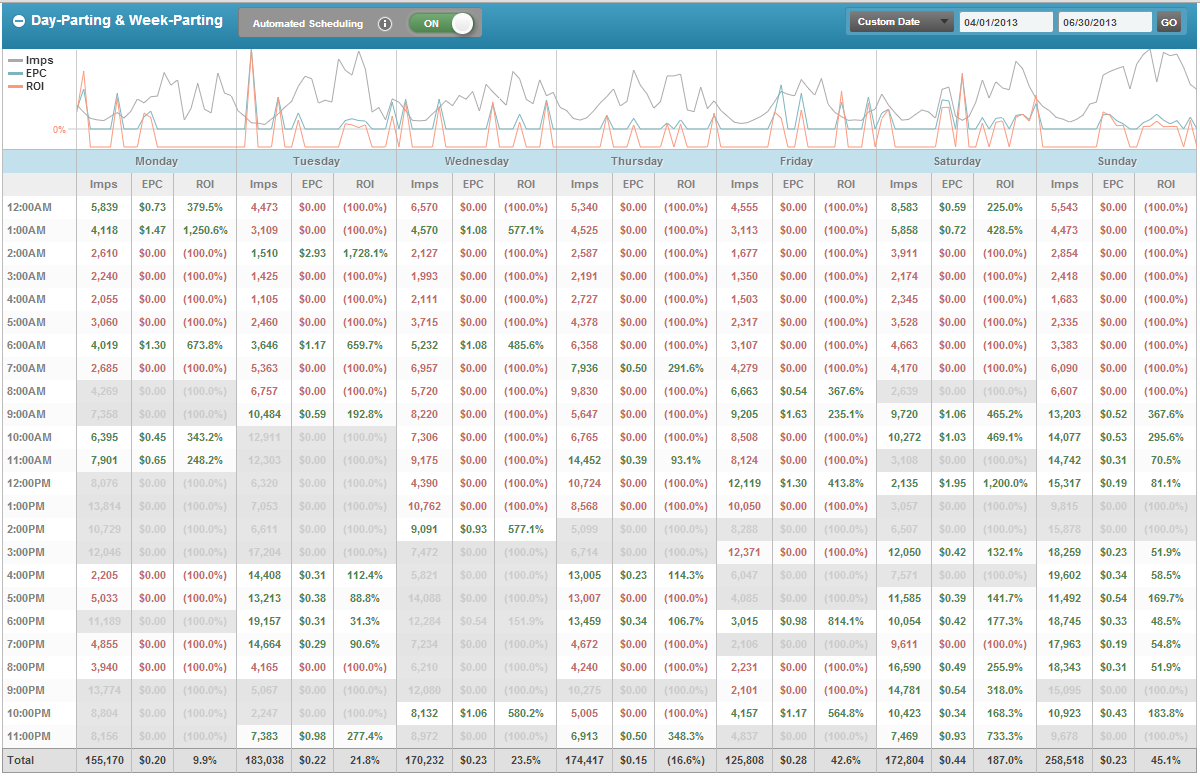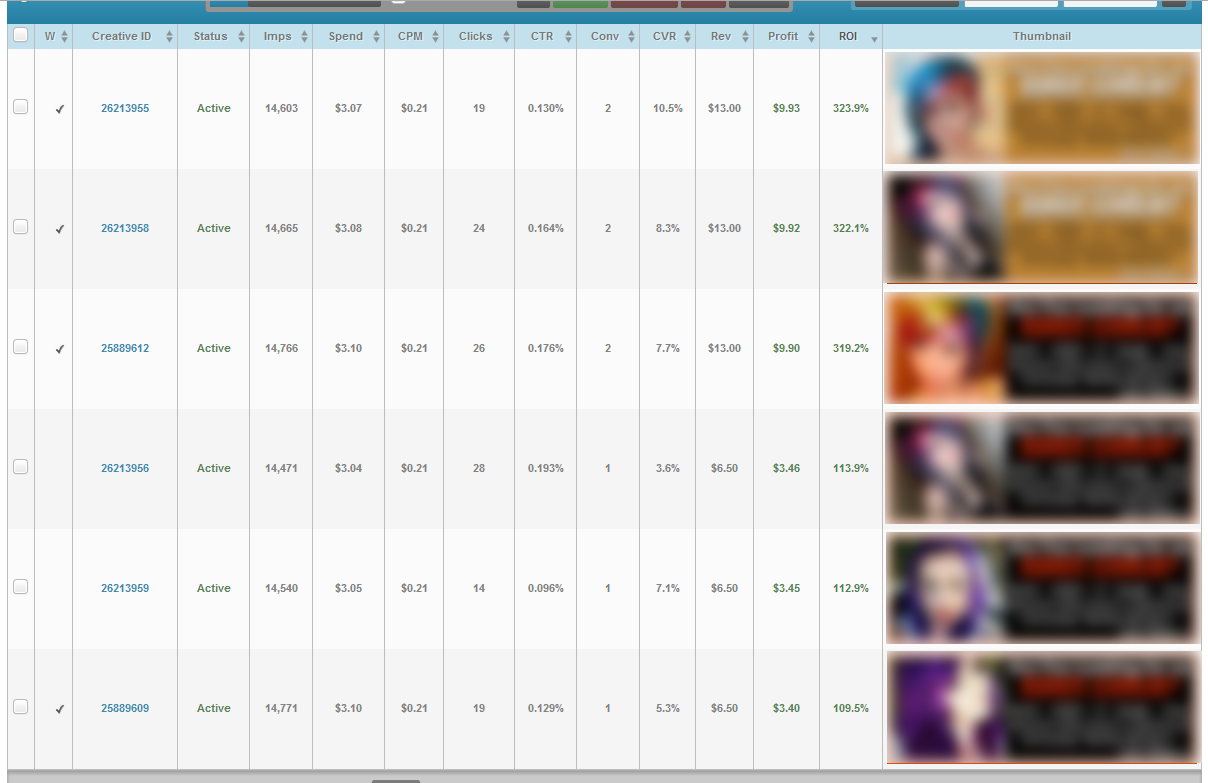How often do you day-part with your campaigns? If you’re not familiar with the term, day-parting is a strategy used by many affiliate marketers which involves pausing campaigns during certain days of the week when traffic is expected to click less or produce fewer conversions.
This strategy can produce great results, but one major concern to many is that pausing campaigns may result in lost opportunities for conversions and profit. The question soon becomes, “What should I do?”
Our Solution: Get the Data
Using Ppro, we decided to conduct our own tests to try to answer this very question with our POF traffic to try to figure out whether or not day-parting could help or hinder our profits. We searched for a campaign that had sufficient data, ultimately choosing one with over 1 million impressions.
With a comprehensive breakdown of our data regarding those impressions (including the impressions, EPC‘s, and ROI) via Ppro’s day-parting scheduler, we first determined if there were any discernible points in the week/day when performance dropped. After that, we initiated the day-parting schedule to observe whether or not overall performance could increase.
Below are our findings:
Targeting and Creatives
As previously mentioned, we took a look at one of our long-running campaigns with a little over 1 million impressions. While the campaign was somewhat stable, the ROI had been slowly dropping. We figured it would be the perfect candidate as to whether or not we could increase performance with day-parting.
While observing the time of the day when conversions happened least (or not at all) we applied a day parting schedule to our testing campaign. To gain sufficient data, we decided to let the campaign run with the day-parting schedule for 3 weeks.
Targeted Demographic
This campaign targeted males ages 21-24 seeking females in Canada with a very low bid. In the interest of allowing this campaign to run a little longer, I won’t divulge every detail, but this should give you a good idea at what kind of traffic we were targeting.
Our Creatives
Lastly, what good is a case study without any creatives?
This is a snapshot of the creatives from the creatives that ran for the first week or so. Some of these creatives images have yet to burn out. Admittedly, the overall performance has slowed, but all in all, the campaign is still doing alright.
Our Results
With the scheduling set up, we resumed our campaign for a total of 3 weeks. So, what were the results?
Breakdown of Campaign Performance
First, let’s take a look at the performance metrics of our campaign before and after day-parting was applied. Keep in mind that this campaign required a little bit of optimization at first. But since this angle had been tested before, it was profitable not too long after it launched.
Performance Without Day-Parting:

As you can see, this campaign isn’t something you could really call “high-volume”. However, it got a decent amount of clicks and ROI. So let’s see what happened after we applied our day-parting schedule.
Performance After Day-Parting (3 weeks):

Fantastic! After applying our day-parting schedule, we managed to increase our CTR and CVR, thus slightly lowering our CPC and gaining a $0.05 EPC increase. We had hoped that the conversion rate would increase since our scheduling was a consequence of only the EPC, but I didn’t expect the CTR to rise as well. Overall, we were able to almost double our ROI! Although our volume was cut down by the day-parting schedule, we were able to increase performance considerably.
Overview of Day-Parting Schedule
With all this day-parting talk, we figure it’s about time we show you exactly we’ve been talking about this whole time. You can take a look at the schedule used for this campaign in the screenshot below:

Final Notes
One thing we wanted to note is that we’re not dealing with a whole lot of data. Sure, this campaign ran for 3 weeks, but due to the targeting, the volume is quite low. With only 11 conversions over 160,000 impressions, it’s impossible to tell whether or not the ROI would remain that high for very long.
What we do know is that with just some minor scheduling, we were able so significantly increase the performance of our campaign even after it had seemed that it had run its course. With that said, this isn’t always going to be the case for all of your campaigns (it certainly hasn’t been the case for us) but you you may be happily surprised at how your campaigns can get a boost of performance with a little bit of scheduling.

the wonders of pof. 3 weeks to make like 30 bucks. youre better off flipping burgers at mcdonalds lol
LOL. You fucking idiot. Our average user runs hundreds of campaigns, some run thousands. That’s why you still suck at life. Zero pig-brain logic.